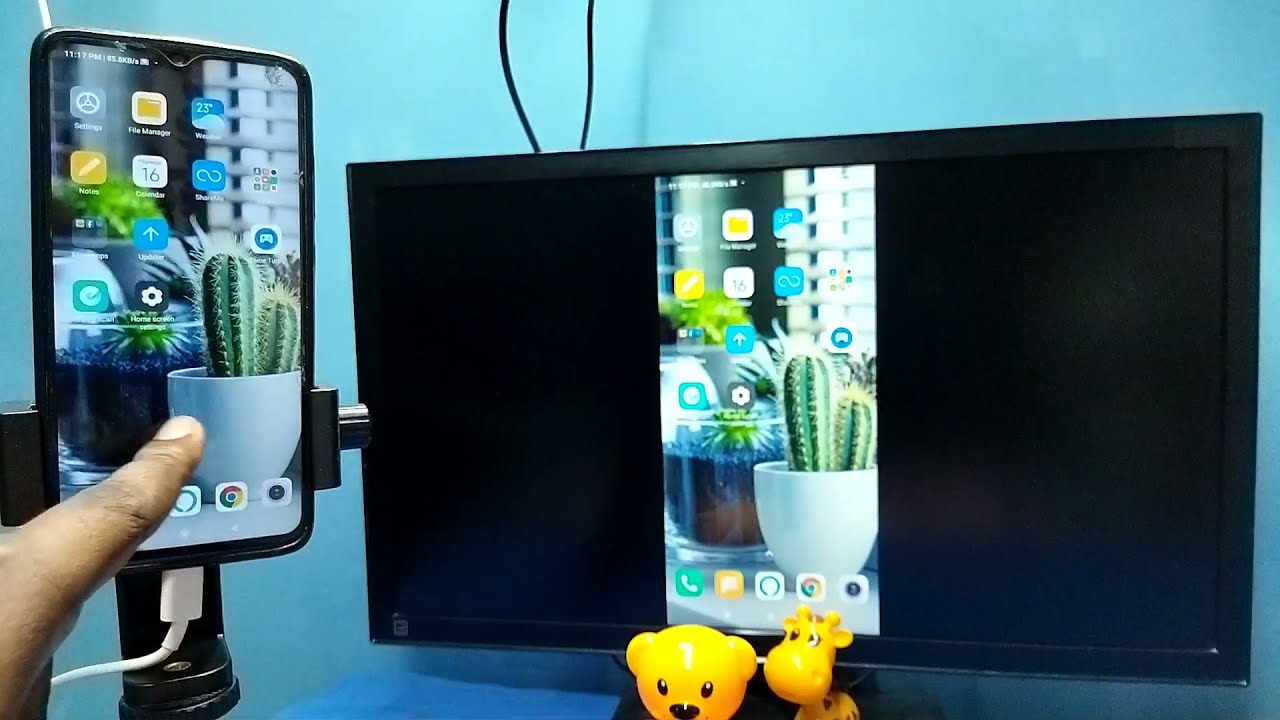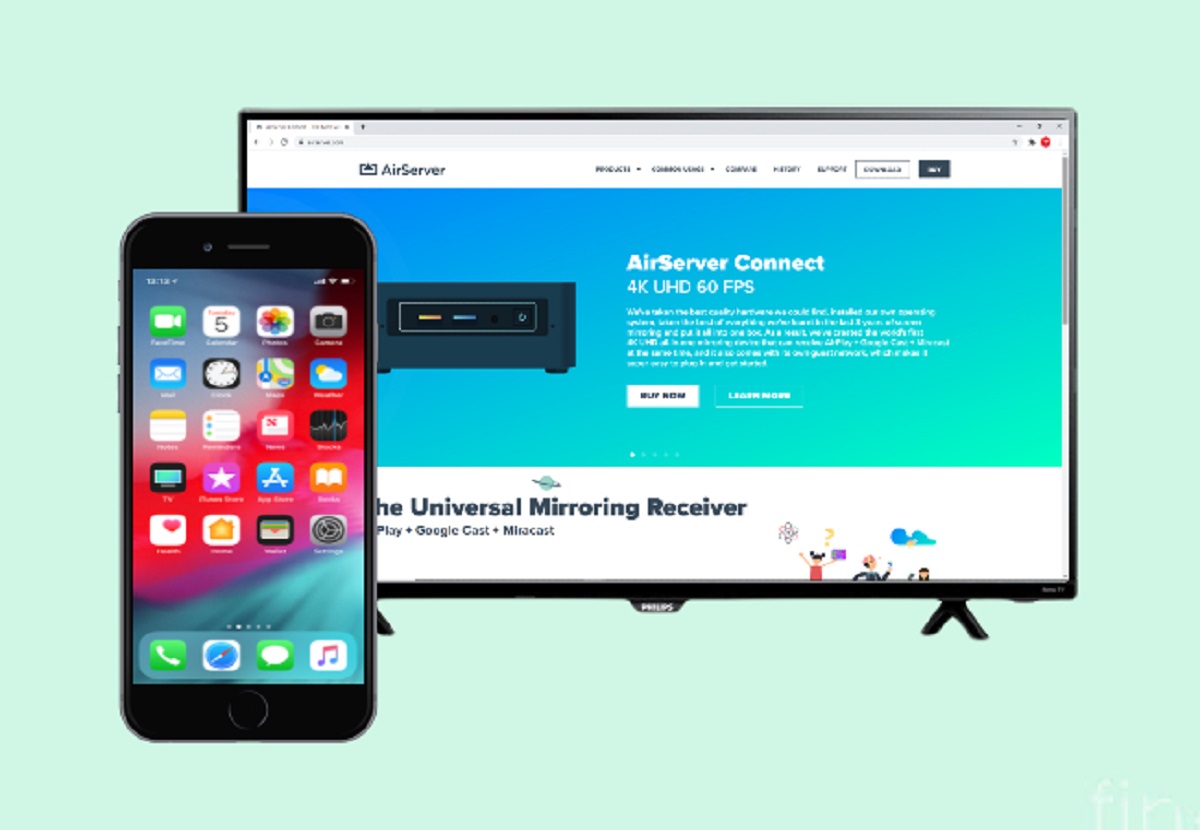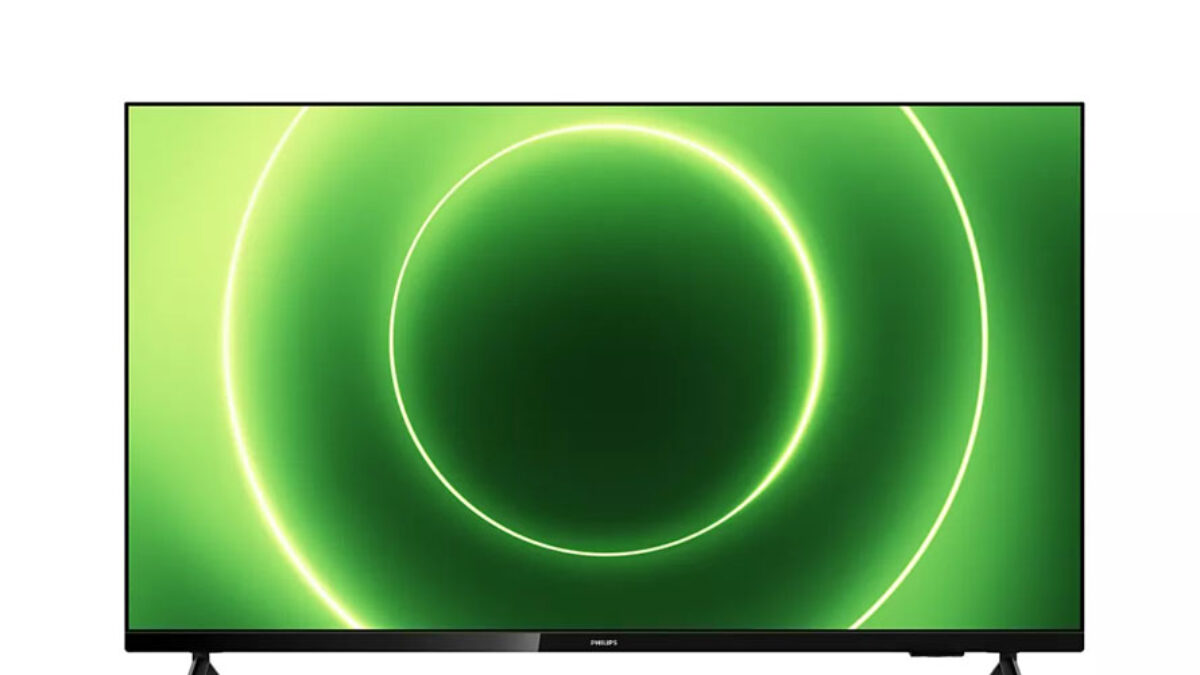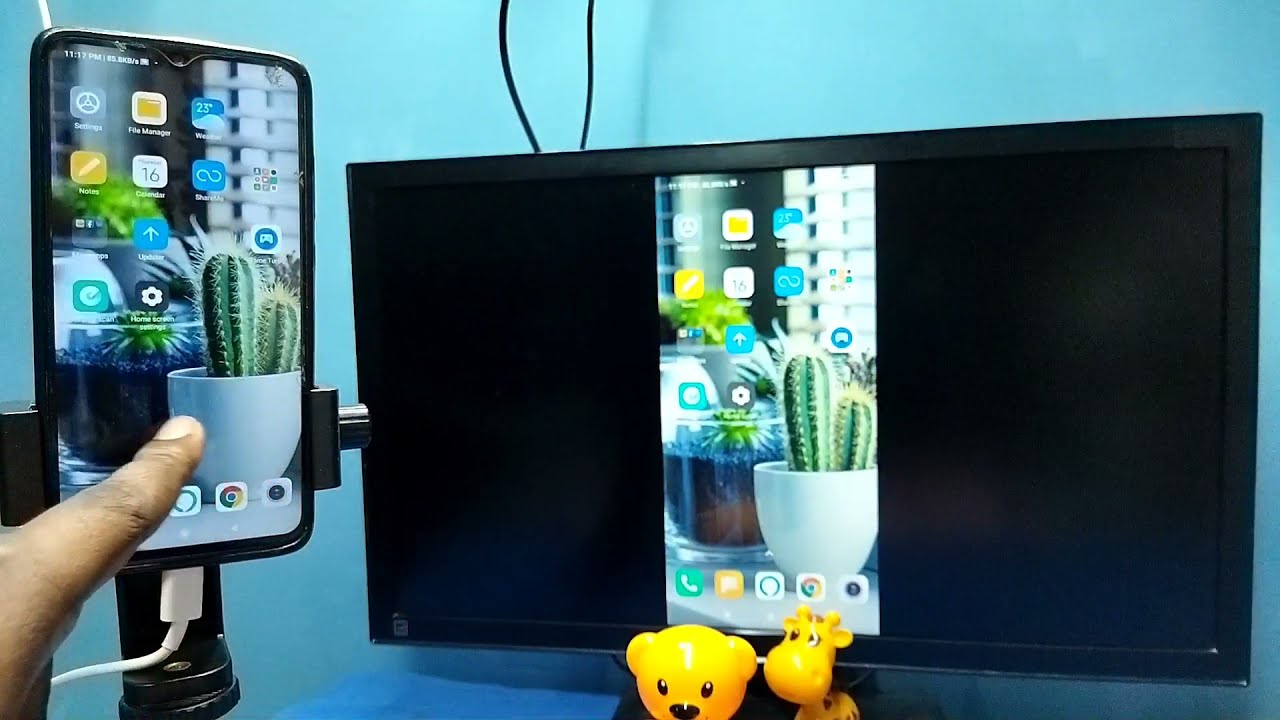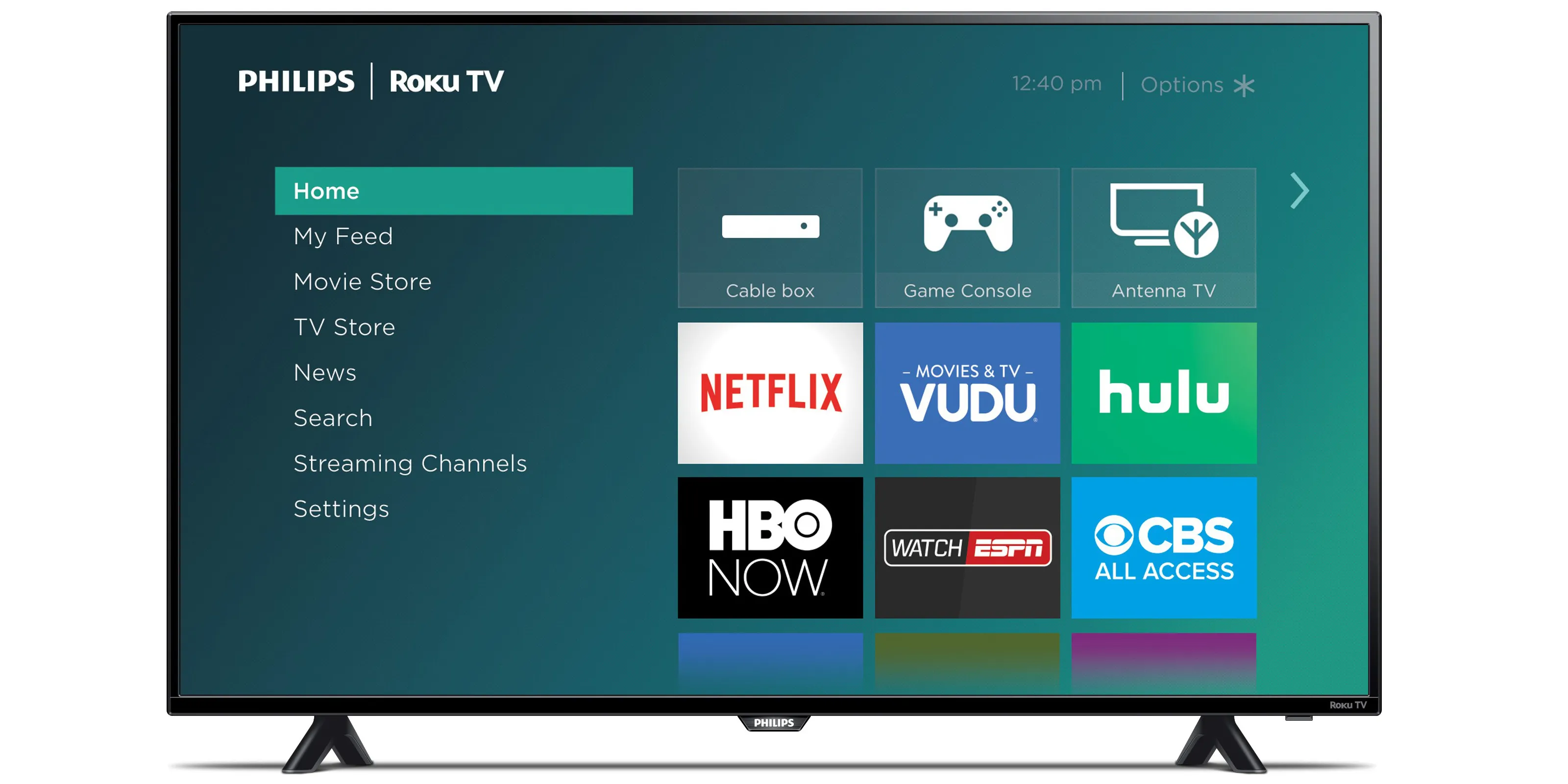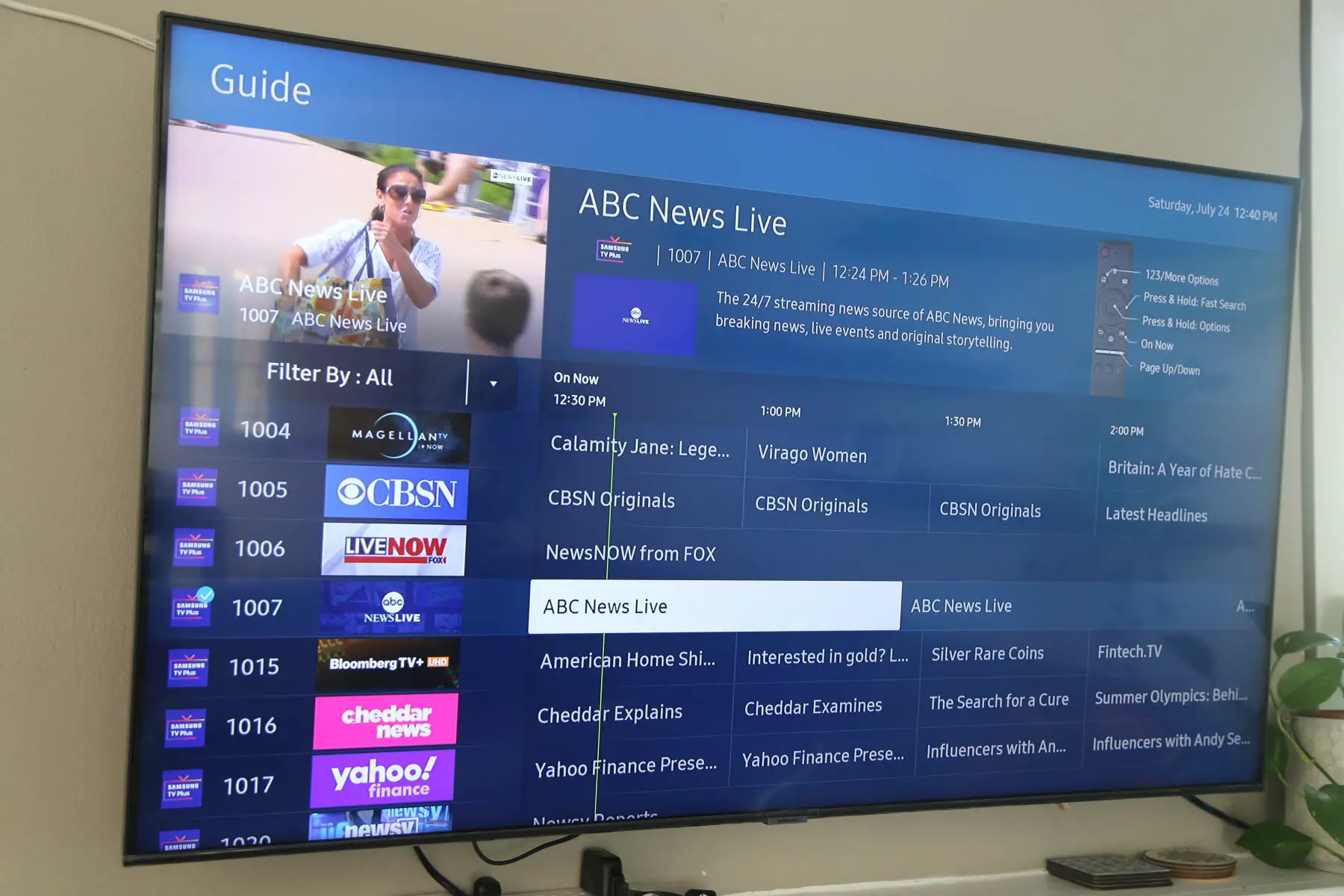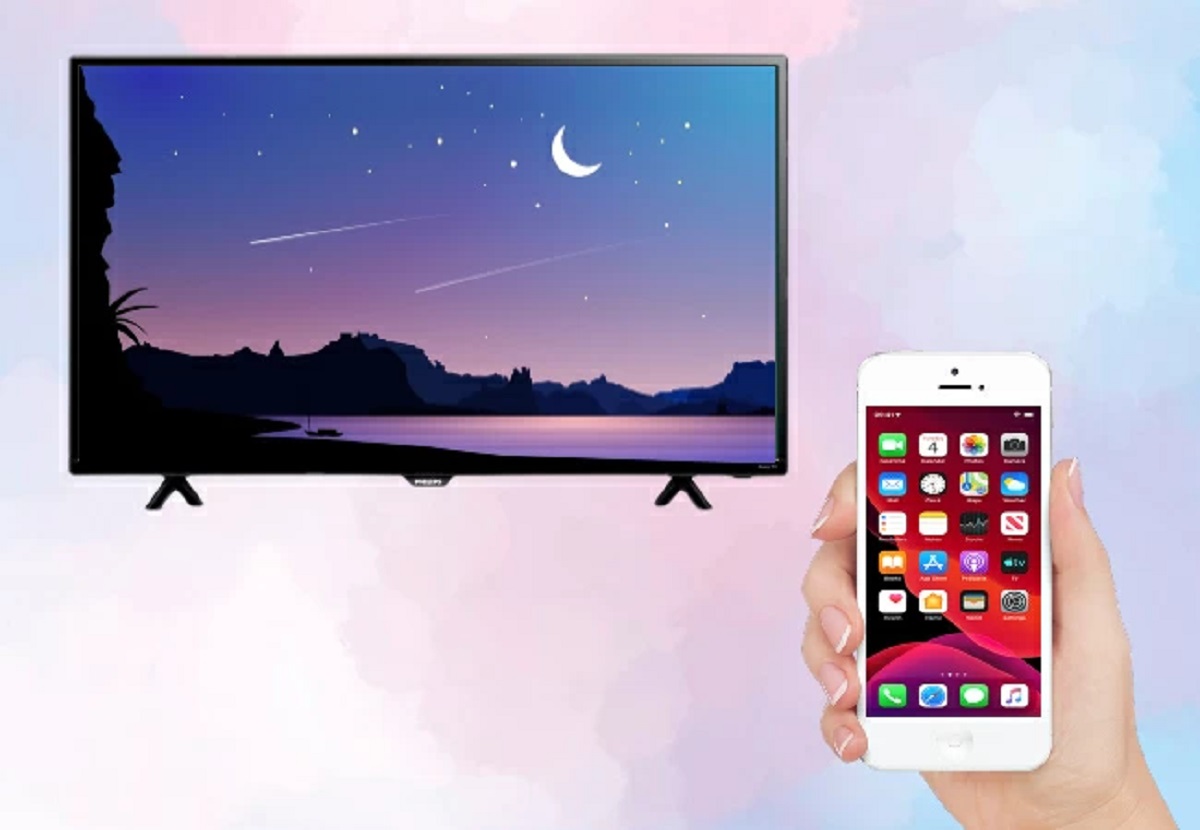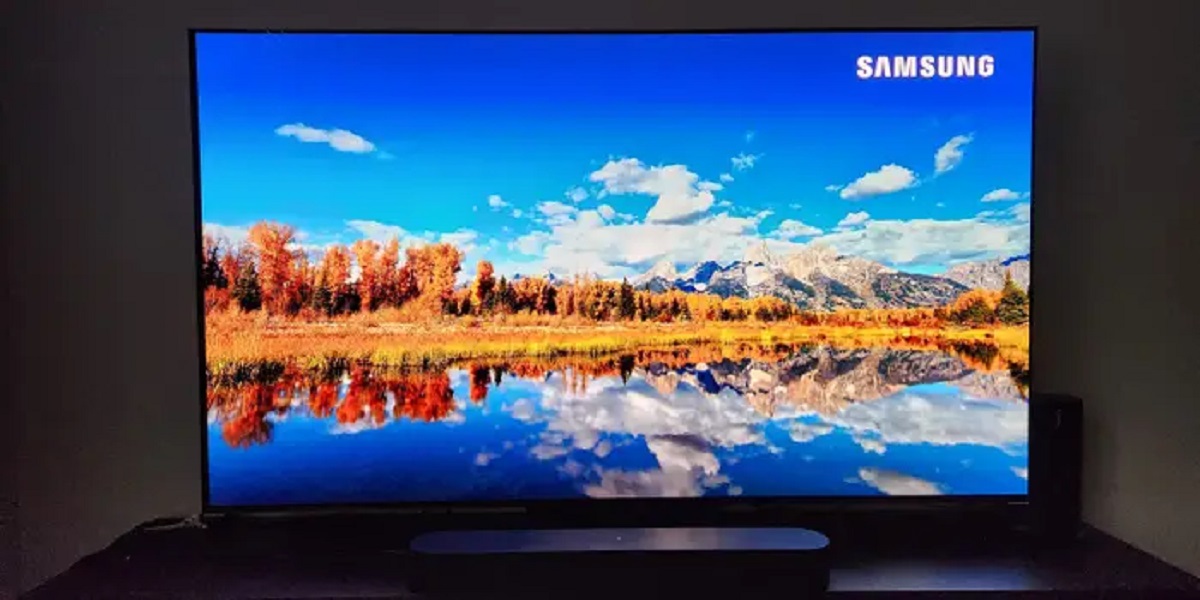Introduction
Welcome to this guide on how to screen mirror on your Philips Smart TV! In this day and age, technology has become an integral part of our daily lives. With the evolution of smart TVs, we now have the ability to connect and interact with various devices to enhance our TV viewing experience.
Screen mirroring is one such feature that allows you to effortlessly display the contents of your smartphone, tablet, or computer directly onto your Philips Smart TV. Whether it’s photos, videos, presentations, or even games, screen mirroring allows you to enjoy them on a larger screen.
So, why would you want to screen mirror on your Philips Smart TV? The answer is simple – convenience and versatility. Instead of huddling around your smartphone or tablet to show something to your friends or family, you can mirror it onto your TV and comfortably enjoy the content together. Additionally, screen mirroring can be quite useful for business presentations or educational purposes, as it allows you to showcase content to a larger audience.
In this guide, we will explore different methods to screen mirror on your Philips Smart TV. Each method has its own set of requirements and compatibility, so finding the one that suits your devices and preferences is essential. We will cover popular methods such as Miracast, Chromecast, Apple AirPlay 2, and even the traditional HDMI cable.
Before we dive into the details, it’s important to note that screen mirroring capabilities may vary depending on the specific model of your Philips Smart TV. It’s always a good idea to consult the user manual or visit the official Philips website for detailed instructions specific to your TV model.
Now, let’s explore the various methods of screen mirroring on your Philips Smart TV and unlock a world of possibilities!
What is screen mirroring?
Screen mirroring, also known as screen casting or mirroring, is a feature that allows you to replicate the display of your mobile device or computer onto a larger screen, such as your Philips Smart TV. It essentially creates a real-time mirror image of your device’s screen, enabling you to view and interact with the content on a larger display.
The concept of screen mirroring has gained popularity as it offers a convenient way to share and enjoy content with others. Whether it’s streaming videos, showcasing photos, playing games, or delivering presentations, screen mirroring provides a seamless and immersive viewing experience.
When you enable screen mirroring on your Philips Smart TV, it serves as a receiver for the display output of your mobile device or computer. This means that whatever you see on your device’s screen, such as apps, videos, documents, or even the home screen, will appear on the TV screen. Essentially, your TV becomes an external monitor for your device.
Screen mirroring technology typically utilizes wireless protocols to establish a connection between the transmitting device (your smartphone, tablet, or computer) and the receiving device (your Philips Smart TV). Some common wireless protocols used for screen mirroring include Miracast, Chromecast, and Apple AirPlay 2.
It’s important to note that screen mirroring is different from streaming. While streaming involves playing media content directly from an online source on your TV, screen mirroring replicates the entire display of your device, allowing you to view not only media content but also other applications, browser tabs, and more.
Screen mirroring is beneficial in various situations. For example, if you want to share a funny video with your family or friends, you can easily mirror your smartphone onto the TV screen, ensuring that everyone can enjoy it together. Similarly, for professional settings, screen mirroring can be used to deliver presentations or collaborate on documents, providing a larger viewing area for better visibility and engagement.
With the widespread availability of smart TVs, including the Philips Smart TV, screen mirroring has become a sought-after feature for those who want to connect and share their devices’ content on a bigger screen. In the following sections, we will explore different methods to achieve screen mirroring on your Philips Smart TV, allowing you to take full advantage of this versatile feature.
Why would you want to screen mirror on your Philips Smart TV?
Screen mirroring on your Philips Smart TV opens up a world of possibilities and advantages that can enhance your overall entertainment and productivity experience. Whether you’re a tech enthusiast, a multimedia lover, or a business professional, here are some compelling reasons why you would want to utilize the screen mirroring feature:
1. Enjoy content on a larger screen: Screen mirroring allows you to enjoy your favorite movies, TV shows, videos, and photos on a much bigger screen. Whether you’re streaming content from online platforms, playing games, or simply browsing the internet, the larger display of your Philips Smart TV provides a more immersive viewing experience.
2. Convenient sharing with family and friends: Instead of huddling around a small smartphone or tablet screen to share content with your loved ones, screen mirroring enables you to mirror your device’s display onto the TV. This way, everyone can comfortably view and enjoy the content together, making movie nights, photo sharing, and social media browsing more enjoyable and inclusive.
3. Enhanced gaming experience: Gamers can take their gaming experience to the next level by screen mirroring their devices onto the Philips Smart TV. Playing mobile games or even PC/console games on a bigger screen can be more immersive, providing a wider field of view and better visibility, particularly for multiplayer or action-packed games.
4. Convenient presentations and collaborations: For professionals, screen mirroring offers a convenient way to deliver presentations or collaborate on projects. Instead of relying on a small laptop or tablet screen, you can mirror your device onto the TV, providing a larger canvas for slideshows, documents, and other collaborative tools. This enables better visibility for both you and your audience, making your presentations more impactful.
5. Educational purposes: Screen mirroring can be invaluable for educational purposes. Teachers can use this feature to showcase educational videos, interactive applications, or instructional materials on a larger screen, making it easier for students to follow along and engage. Similarly, students can present their projects or assignments using screen mirroring, allowing their work to be shared with the whole class.
6. Wireless convenience: With wireless screen mirroring technologies like Miracast, Chromecast, and Apple AirPlay 2, you can seamlessly connect and mirror your devices onto your Philips Smart TV without the need for messy cables or adapters. This provides a hassle-free and clutter-free setup, allowing you to enjoy the benefits of screen mirroring with ease.
Overall, screen mirroring on your Philips Smart TV offers a versatile and flexible way to showcase and share your device’s content on a larger display. Whether it’s for entertainment, productivity, or educational purposes, the convenience and enhanced viewing experience make screen mirroring a valuable feature to take advantage of.
Different ways to screen mirror on a Philips Smart TV
Screen mirroring on a Philips Smart TV can be accomplished through various methods, each catering to different devices and preferences. Let’s explore some of the popular ways to achieve screen mirroring:
Method 1: Screen mirroring using Miracast: Miracast is a wireless display standard that allows you to mirror the screen of your smartphone, tablet, or computer onto your Philips Smart TV. It works by establishing a direct Wi-Fi connection between the transmitting device and the TV. Most Android devices and Windows PCs have built-in Miracast support, making it a widely compatible option for screen mirroring.
Method 2: Screen mirroring using Chromecast: Chromecast is a streaming device that plugs into your TV’s HDMI port. It allows you to cast or mirror the content from your smartphone, tablet, or computer onto the TV. With the Google Home app, which is available for both iOS and Android devices, you can easily set up and control the screen mirroring process. Chromecast offers a versatile solution for screen mirroring and streaming various media apps as well.
Method 3: Screen mirroring using Apple AirPlay 2: If you are an Apple user, you can utilize Apple’s AirPlay 2 technology to mirror the screen of your iPhone, iPad, or Mac onto your Philips Smart TV. AirPlay 2 enables seamless wireless streaming and screen mirroring, allowing you to enjoy your favorite content on the big screen with just a few taps or clicks. To use AirPlay 2, make sure your Philips Smart TV supports this feature and is connected to the same Wi-Fi network as your Apple device.
Method 4: Screen mirroring using an HDMI cable: Although wireless methods are more popular, you can still opt for a traditional wired connection using an HDMI cable. This method involves connecting your mobile device or computer to your Philips Smart TV using an HDMI cable. Simply plug one end of the HDMI cable into your device’s HDMI output port and the other end into an available HDMI input port on your TV. Once connected, set your TV to the appropriate HDMI input source, and you’ll be able to mirror your device’s screen onto the TV.
When choosing a screen mirroring method, ensure compatibility between your devices and the TV. Some older devices may not support wireless screen mirroring technologies like Miracast or Apple AirPlay 2. In such cases, using an HDMI cable for wired connection can be a reliable option.
It’s worth noting that the specific steps and options for screen mirroring may differ between different models of Philips Smart TVs. Refer to your TV’s user manual or the official Philips website for detailed instructions specific to your TV model.
With these different methods at your disposal, you can easily screen mirror your smartphone, tablet, or computer onto your Philips Smart TV and unlock endless entertainment possibilities.
Method 1: Screen mirroring using Miracast
Miracast is a widely used wireless display standard that allows you to effortlessly mirror the screen of your smartphone, tablet, or computer onto your Philips Smart TV. With Miracast, you can enjoy your favorite apps, videos, photos, and more on a larger screen without the need for cables or adapters.
Here’s a step-by-step guide on how to screen mirror using Miracast on your Philips Smart TV:
Step 1: Check device compatibility: Ensure that your smartphone, tablet, or computer supports Miracast. Most Android devices running Android 4.2 or later have built-in Miracast support. For Windows devices, look for the “Project” or “Connect” option in the settings menu to check for Miracast compatibility.
Step 2: Enable Miracast on your Philips Smart TV: On your Philips Smart TV, navigate to the settings menu. Look for the “Network” or “Wireless” section and find the Miracast option. Enable it to prepare your TV for screen mirroring.
Step 3: Activate Miracast on your device: On your mobile device or computer, enable Miracast. The exact steps may vary depending on your device’s manufacturer and operating system. For Android devices, you can usually find the Miracast option in the settings menu, typically under “Display” or “Connections”. For Windows devices, click on the “Action Center” icon in the system tray and select the “Connect” option.
Step 4: Establish a connection: Once Miracast is enabled on both your Philips Smart TV and your device, they should automatically detect each other. On your device, you will see a list of available devices, including your TV. Select your Philips Smart TV from the list to initiate the connection. It may take a few moments for the devices to establish a connection.
Step 5: Begin screen mirroring: Once the connection is established, your device’s screen will be mirrored on your Philips Smart TV. You can now navigate through your device’s interface, open apps, play videos, and more, and they will be displayed on the TV screen in real-time.
Step 6: Disconnect and stop screen mirroring: To disconnect and stop screen mirroring, simply disable Miracast on your device. This will terminate the connection between your device and your Philips Smart TV, and the TV will revert to its regular mode.
It’s important to note that some devices may have different names for the Miracast feature. For example, on Samsung devices, it is called “Smart View,” while on LG devices, it is known as “Screen Share.” Consult your device’s user manual or the manufacturer’s website for specific instructions.
By utilizing Miracast, you can enjoy the convenience of wirelessly screen mirroring your favorite content to your Philips Smart TV. Whether it’s streaming videos, playing games, or showcasing presentations, Miracast offers a seamless and versatile solution for screen mirroring.
Method 2: Screen mirroring using Chromecast
If you own a Chromecast device, you can easily utilize it to screen mirror your smartphone, tablet, or computer onto your Philips Smart TV. Chromecast offers a seamless and convenient way to share your favorite content on a larger screen with just a few simple steps.
Here’s how you can screen mirror using Chromecast on your Philips Smart TV:
Step 1: Set up your Chromecast: Begin by setting up your Chromecast device and connecting it to the HDMI port on your Philips Smart TV. Follow the instructions provided with the Chromecast to complete the setup process. Make sure that both your Chromecast device and your Philips Smart TV are connected to the same Wi-Fi network.
Step 2: Install and set up the Google Home app: On your smartphone or tablet, download and install the Google Home app from the App Store or Google Play Store. Open the app and sign in with your Google account. The Google Home app will guide you through the setup process for your Chromecast device and allow you to control its settings.
Step 3: Enable screen mirroring with Chromecast: In the Google Home app, tap on the “Add” or “+” symbol to set up a new device. Select “Set up device,” then “Set up new devices” in your home. Follow the on-screen instructions to connect your Chromecast to your home Wi-Fi network. Once the setup is complete, tap on “Continue” and select your Chromecast device from the list.
Step 4: Begin screen mirroring: With your Chromecast device set up and connected to your Philips Smart TV, you can now begin screen mirroring. On your smartphone or tablet, open the app or content that you want to mirror on the TV. Look for the “Cast” or “Screen Mirror” icon within the app and tap on it. The app will detect available devices, including your Chromecast. Select your Chromecast from the list to initiate the screen mirroring process.
Step 5: Enjoy screen mirroring with Chromecast: Once connected, your device’s screen will be mirrored on your Philips Smart TV. You can now navigate through your device’s interface, open apps, play videos, and more, and they will be displayed on the TV screen in real-time. You can also adjust the volume and playback controls through the Google Home app on your device.
Step 6: Stop screen mirroring: To stop screen mirroring, simply close the app or content that you were mirroring, or tap on the “Disconnect” or “Stop casting” option within the app. This will end the screen mirroring session, and your Philips Smart TV will return to its regular mode.
Chromecast provides a user-friendly and reliable solution for screen mirroring on your Philips Smart TV. Whether you want to stream videos, browse the internet, or showcase presentations, Chromecast makes it easy to mirror content from your device onto the big screen.
Method 3: Screen mirroring using Apple AirPlay 2
If you are an Apple user, you can seamlessly screen mirror your iPhone, iPad, or Mac onto your Philips Smart TV using Apple’s AirPlay 2 technology. AirPlay 2 offers a convenient and user-friendly way to share your device’s screen and enjoy your favorite content on a larger display.
Here’s how you can screen mirror using Apple AirPlay 2 on your Philips Smart TV:
Step 1: Check AirPlay 2 compatibility: Ensure that your Philips Smart TV supports Apple AirPlay 2. Not all Philips Smart TVs offer AirPlay 2 support, so be sure to check the official Philips website or consult your TV’s user manual to confirm compatibility.
Step 2: Connect your Philips Smart TV to the same Wi-Fi network: To use AirPlay 2, your Philips Smart TV and your Apple device need to be connected to the same Wi-Fi network. Make sure both devices are connected before proceeding.
Step 3: Enable AirPlay on your Philips Smart TV: On your Philips Smart TV, navigate to the settings menu and locate the AirPlay settings. Enable AirPlay or AirPlay 2 to prepare your TV for screen mirroring.
Step 4: Activate AirPlay on your Apple device: On your iPhone, iPad, or Mac, swipe up from the bottom (or down from the top, on iPhone X or newer) of the screen to access the Control Center. Tap on the AirPlay icon, usually represented by a screen with an arrow pointing upwards. A list of available devices will appear.
Step 5: Select your Philips Smart TV: In the list of available devices, look for your Philips Smart TV and tap on it to initiate the screen mirroring process. Your Apple device will establish a connection with your TV.
Step 6: Enjoy screen mirroring with AirPlay: Once the connection is established, your device’s screen will be mirrored on your Philips Smart TV. You can now navigate through your device’s interface, open apps, play videos, and more, and they will be displayed on the TV screen in real-time.
Step 7: Stop screen mirroring: To stop screen mirroring, simply disable AirPlay on your Apple device. This will end the connection between your device and your Philips Smart TV, and the TV will return to its normal mode.
With AirPlay 2, you can enjoy the seamless integration between your Apple devices and your Philips Smart TV. Whether you want to stream videos, display photos, or deliver presentations, AirPlay 2 provides an efficient solution for screen mirroring on your Philips Smart TV.
Method 4: Screen mirroring using HDMI cable
If you prefer a wired connection for screen mirroring, using an HDMI cable is a reliable and straightforward option to screen mirror your devices onto your Philips Smart TV. This method allows you to enjoy a stable and high-quality screen mirroring experience without relying on wireless technologies.
Here’s how you can screen mirror using an HDMI cable on your Philips Smart TV:
Step 1: Check device compatibility: Ensure that your smartphone, tablet, or computer has an HDMI port for connecting the cable. Most modern devices, including laptops and desktop computers, come equipped with HDMI ports. If your device lacks an HDMI port, you may need an adapter to connect the HDMI cable to your device.
Step 2: Connect one end of the HDMI cable: Take one end of the HDMI cable and insert it into the HDMI output port of your device. Make sure it is securely connected. Note that the specific location of the HDMI port may vary depending on your device’s make and model.
Step 3: Connect the other end of the HDMI cable: Take the other end of the HDMI cable and insert it into an available HDMI input port on your Philips Smart TV. Remember the port number you choose, as you will need to select the corresponding HDMI input source on your TV later.
Step 4: Set your Philips Smart TV to the appropriate HDMI input: Grab your TV remote and press the “Input” or “Source” button to access the list of available input sources. Navigate through the list and select the HDMI input port that you connected the cable to. For example, if you plugged the HDMI cable into HDMI 1, select HDMI 1 as the input source on your TV.
Step 5: Begin screen mirroring: Once your Philips Smart TV is set to the correct HDMI input, your device’s screen should appear on the TV. Depending on your device’s settings, it may automatically detect the connection and mirror the screen. If not, you may need to adjust your device’s display settings to output the video through the HDMI connection.
Step 6: Enjoy screen mirroring with HDMI: With the HDMI cable connected and the screen mirroring activated, you can navigate through your device’s interface, launch apps, play videos, and more. The content will be seamlessly displayed on your Philips Smart TV in real-time.
Step 7: Stop screen mirroring: To stop screen mirroring, simply disconnect the HDMI cable from your device or switch the input source on your TV to a different option.
Screen mirroring with an HDMI cable provides a reliable and stable connection for showcasing your device’s content on a larger screen. It is a versatile option that works with a wide range of devices and is particularly useful if your device does not support wireless screen mirroring technologies or if you prefer a wired connection.
Conclusion
Screen mirroring on your Philips Smart TV is a powerful feature that allows you to share and enjoy the content from your smartphone, tablet, or computer on a bigger screen. Whether you want to stream videos, play games, display photos, or deliver presentations, screen mirroring opens up a world of possibilities for enhancing your entertainment and productivity experience.
In this guide, we explored different methods for screen mirroring on a Philips Smart TV. We discussed methods such as Miracast, Chromecast, Apple AirPlay 2, and using an HDMI cable. Each method offers its own set of advantages and compatibility, allowing you to choose the one that suits your devices and preferences.
If you have an Android device or Windows PC, Miracast provides a convenient wireless solution for screen mirroring. With Chromecast, you can effortlessly stream and mirror your favorite content from your smartphone, tablet, or computer. If you are an Apple user, AirPlay 2 offers seamless integration between your Apple devices and your Philips Smart TV. And finally, using an HDMI cable provides a reliable and stable wired connection for screen mirroring.
Before proceeding with screen mirroring, ensure compatibility between your devices and your Philips Smart TV. Consult your device’s user manual or visit the official Philips website to verify the screen mirroring capabilities of your specific TV model.
Remember to follow the step-by-step instructions provided for each method to successfully set up and initiate screen mirroring. With a bit of exploration and configuration, you can effortlessly enjoy your favorite content on the big screen of your Philips Smart TV.
Whether it’s a cozy movie night, an engaging presentation, or a fun-filled gaming session, screen mirroring on your Philips Smart TV will elevate your entertainment and productivity to new heights. Embrace this versatile feature and unlock the full potential of your devices!







